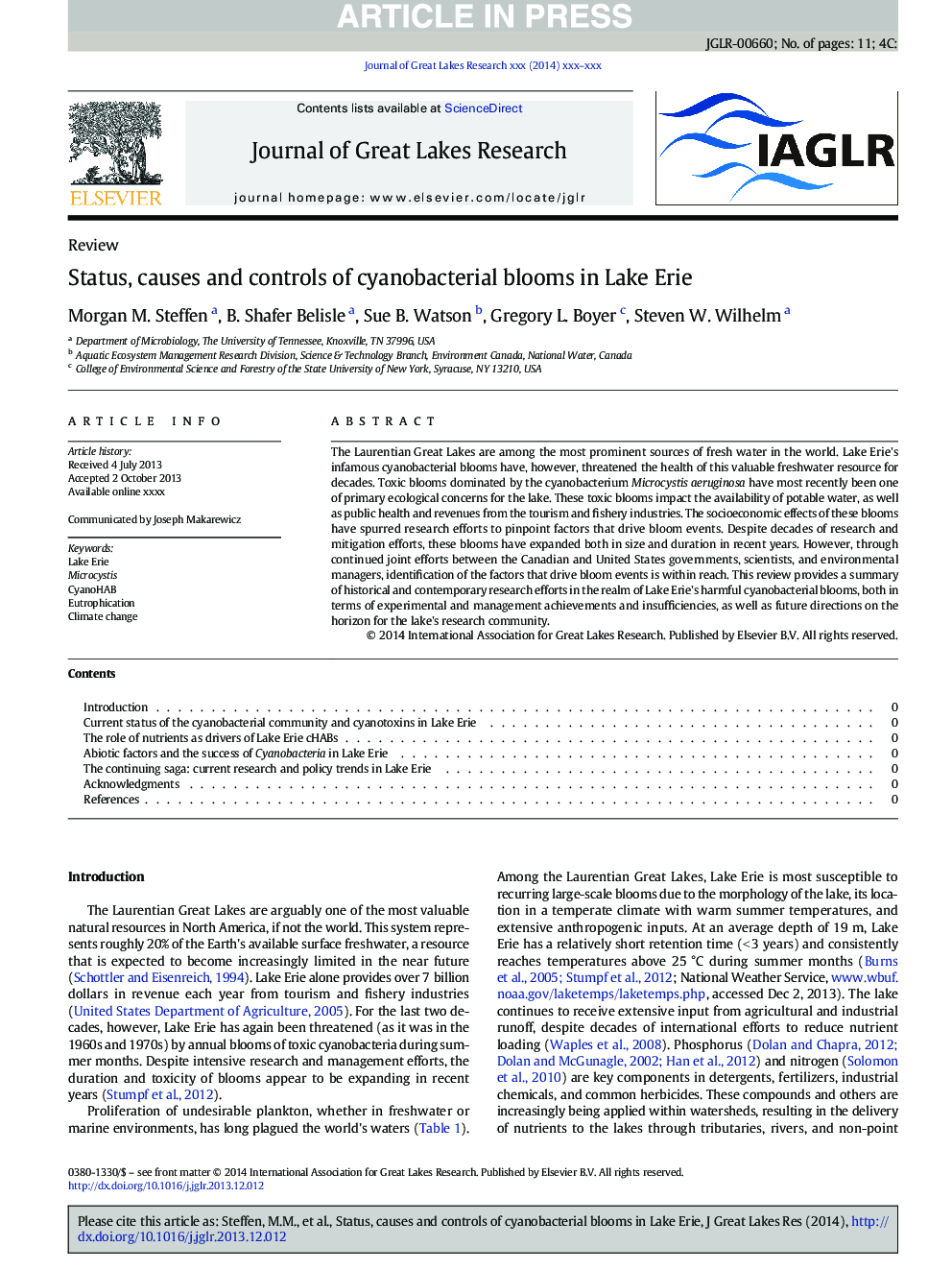| Article ID | Journal | Published Year | Pages | File Type |
|---|---|---|---|---|
| 6305205 | Journal of Great Lakes Research | 2014 | 11 Pages |
Abstract
The Laurentian Great Lakes are among the most prominent sources of fresh water in the world. Lake Erie's infamous cyanobacterial blooms have, however, threatened the health of this valuable freshwater resource for decades. Toxic blooms dominated by the cyanobacterium Microcystis aeruginosa have most recently been one of primary ecological concerns for the lake. These toxic blooms impact the availability of potable water, as well as public health and revenues from the tourism and fishery industries. The socioeconomic effects of these blooms have spurred research efforts to pinpoint factors that drive bloom events. Despite decades of research and mitigation efforts, these blooms have expanded both in size and duration in recent years. However, through continued joint efforts between the Canadian and United States governments, scientists, and environmental managers, identification of the factors that drive bloom events is within reach. This review provides a summary of historical and contemporary research efforts in the realm of Lake Erie's harmful cyanobacterial blooms, both in terms of experimental and management achievements and insufficiencies, as well as future directions on the horizon for the lake's research community.
Related Topics
Physical Sciences and Engineering
Earth and Planetary Sciences
Earth and Planetary Sciences (General)
Authors
Morgan M. Steffen, B. Shafer Belisle, Sue B. Watson, Gregory L. Boyer, Steven W. Wilhelm,
